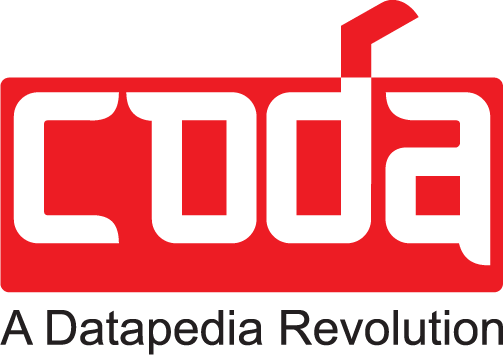Material Master Cleansing is the foundation of accurate, efficient, and cost-effective SAP operations. When duplicates and misgrouped materials flood the system, organizations face hidden costs, bloated inventories, and unreliable analytics. In asset-intensive industries like oil and gas, utilities, and manufacturing, these inefficiencies scale quickly turning into millions in lost value every year.
Instead of treating duplicates as minor errors, decision-makers must recognize them as systemic risks. Eliminating duplicates and grouping materials correctly through a structured Material Master Cleansing process transforms SAP data into a reliable, single source of truth that supports smarter procurement, maintenance, and compliance.
Why Material Master Cleansing Matters
In asset-intensive industries like oil and gas, utilities, steel, and construction, procurement teams juggle tens of thousands of material codes. Over time, poor governance, siloed systems, and free-text entries cause duplication.
Here’s the impact of leaving duplicates unchecked:
- Inventory bloat – Unnecessary stock ties up working capital.
- Procurement inefficiency – Buyers order the same item multiple times from different vendors.
- Maintenance delays – Technicians struggle to find the right part in a sea of duplicates.
- Compliance risks – Standards and safety requirements become harder to enforce.
- Inaccurate reporting – Analytics built on duplicates distort reality.
One Middle Eastern steel operator found that 18% of its 85,000 material records were duplicates, leading to a $2.7 million annual loss in procurement inefficiency and carrying costs. That is not an exception; it’s the norm when data cleansing is ignored.
What Causes Duplicate Materials in SAP?
Understanding the root helps prevent future rework. Duplicates typically occur due to:
- Decentralized data entry – Different plants or departments create materials independently.
- Lack of naming standards – “Bearing 6205” vs. “Ball Brg 6205 SKF” vs. “SKF Bearing 6205.”
- Multiple ERPs or legacy systems – Mergers and system integrations often duplicate records.
- Free-text requests – Users create new codes when they can’t find an item quickly.
- Poor governance – No approval workflows or checks at the point of creation.
Without structured Material Master Cleansing, these issues snowball.

Ready to cleanse your material master and boost ROI?
The Step-by-Step Cleansing Playbook
1. Audit the Material Master
Begin with a data audit to quantify the problem. Use exact match and fuzzy match algorithms to detect duplicates. AI-driven linguistic tools can recognize that “seal ring” and “gasket ring” describe the same item.
Outcome: Clear visibility of duplicate volume and complexity.
2. Standardize Naming & Specifications
Adopt a naming template like [Type][Description][Size]_[Manufacturer]. Enrich each record with specifications, manufacturer details, and classification codes such as UNSPSC or ISO.
Outcome: Every material follows the same format, reducing ambiguity.
3. Deduplicate & Merge
Apply a rule-based process:
- Exact duplicates → Merge or deactivate.
- Near duplicates → Consolidate under one golden record.
- Functional duplicates → Rationalize with engineering input.
SAP MDG (Master Data Governance) allows duplicate checks during creation or changes using scoring thresholds. This prevents re-entry after cleansing.
Outcome: A leaner, accurate material master without losing historical data.
4. Enrich Data for Usability
Add missing specifications, manufacturer part numbers, datasheets, and synonyms. This makes it easier for maintenance or procurement teams to find what they need, without creating duplicates.
Outcome: Richer data reduces search friction and unnecessary new entries.
5. Establish Governance Framework
Cleansing is not a one-off project. Governance ensures sustainability. Define:
- Roles – Data stewards, approvers, requestors.
- Workflows – Approval steps for material creation and changes.
- Policies – Naming conventions, mandatory fields, periodic reviews.
Outcome: Duplicates are stopped before they reappear.
6. Continuous Monitoring
Automate real-time duplicate detection and routine audits. Tools like CODASOL’s PROSOL or SAP MDG workflows enable live checks during data entry.
Outcome: Long-term data health and compliance.
Case study
Petrochemical Company
- Challenge: 16,000 duplicate materials across multiple plants.
- Solution: Audit, deduplication, standardization.
- Result: 12% inventory reduction, 18% faster procurement cycle, ROI achieved in under five months.
Comparison: Manual vs. Automated Cleansing
| Step | Manual Approach | Automated / AI Approach |
|---|---|---|
| Audit | Spreadsheet matching, error-prone | Fuzzy matching, AI linguistic parsing |
| Standardization | Human templates, slow adoption | Automated rules and code libraries |
| Deduplication | Risk of losing history | Rule-driven merge, transactional safe |
| Enrichment | Time-consuming data entry | Automated specs and vendor catalog pulls |
| Governance | Policy documents rarely followed | Built-in approval workflows in ERP/MDG |
| Monitoring | Quarterly manual checks | Real-time duplicate detection |
Business Benefits of Material Master Cleansing
Decision-makers in asset-intensive industries see immediate and long-term value:
- Cost Savings – Less inventory, fewer procurement errors, reduced working capital.
- Efficiency Gains – Faster material searches, simplified maintenance planning.
- Compliance & Safety – Consistent specifications improve quality assurance.
- Smarter Analytics – Accurate reporting drives better procurement and asset strategies.
- Future-Readiness – Clean data is the foundation for AI, IoT, and digital twin initiatives.
Implementation Best Practices
- Start with high-value plants – Cleanse the sites with the biggest spend or stock first.
- Get cross-functional buy-in – Procurement, engineering, and IT must collaborate.
- Don’t aim for perfection at once – Start with duplicates and standardization, then enrich progressively.
- Invest in technology – AI-driven cleansing and governance saves time and improves accuracy.
- Train your people – Even the best system fails if users bypass standards.
Prosol: Your End-to-End Solution for SAP Material Master Cleansing
Manual cleansing and duplicate elimination can only take you so far. Prosol, CODASOL’s flagship SaaS platform, automates data cleansing, standardization, deduplication, and enrichment ensuring you get a single source of truth for your SAP Material Master. With seamless integration into SAP, Prosol transforms messy material data into accurate, consistent, and actionable information.
Ready to simplify your SAP Material Master cleansing?
Prosol is available directly on the SAP Store, making adoption fast, secure, and enterprise ready.

FAQs on Material Master Cleansing
1. What is a duplicate material in SAP?
It’s when the same physical item is recorded under different codes, like “Seal Ring 25mm” and “O-Ring 25MM.”
2. Can SAP MDG prevent duplicates?
Yes. SAP MDG offers duplicate detection with configurable scoring thresholds, triggered at material creation or change request.
3. How often should I audit my material master?
Quarterly for stable organizations; monthly for large or fast-moving enterprises with decentralized plants.
4. Will merging duplicates erase history?
No. Proper governance ensures historical records are preserved while duplicates are deactivated.
5. Why is governance critical after cleansing?
Without governance, duplicates creep back in. Governance ensures long-term consistency, compliance, and savings.
Final Word
Material Master Cleansing is a business enabler. For industries where every spare part and purchase order matters, cleansing duplicates and grouping correctly unlocks immediate cost savings and future-ready digital transformation. Clean data is the backbone of operational excellence.


